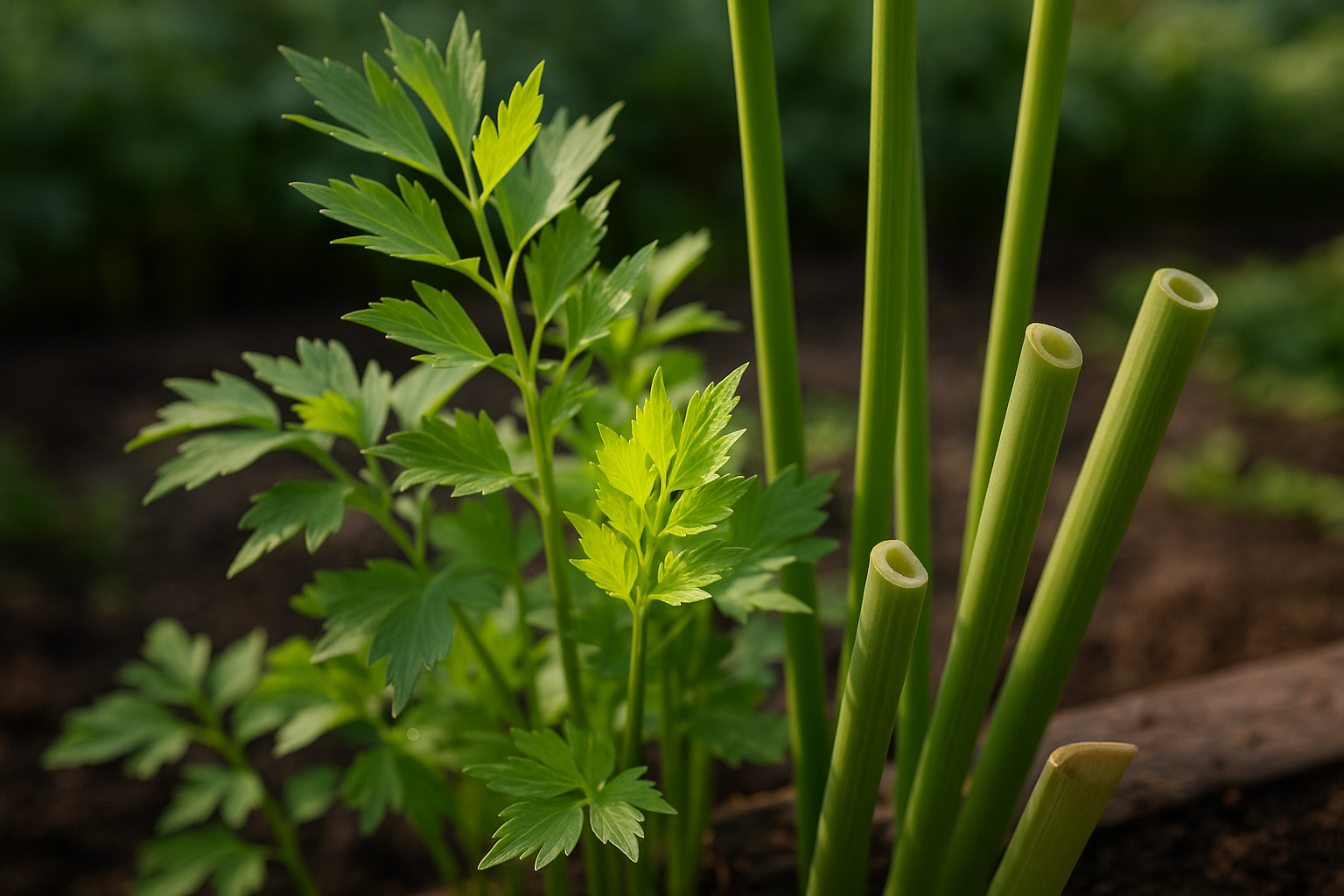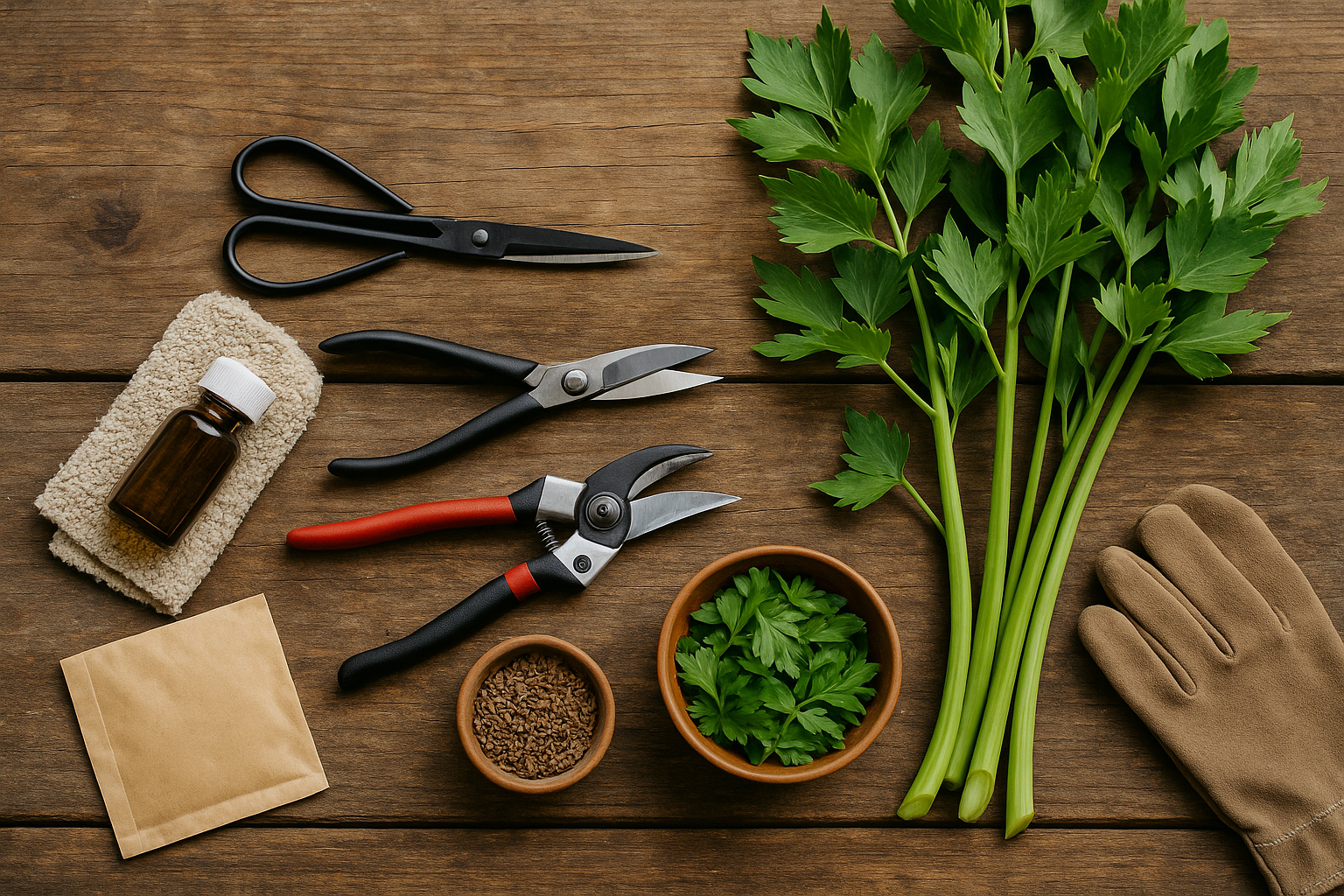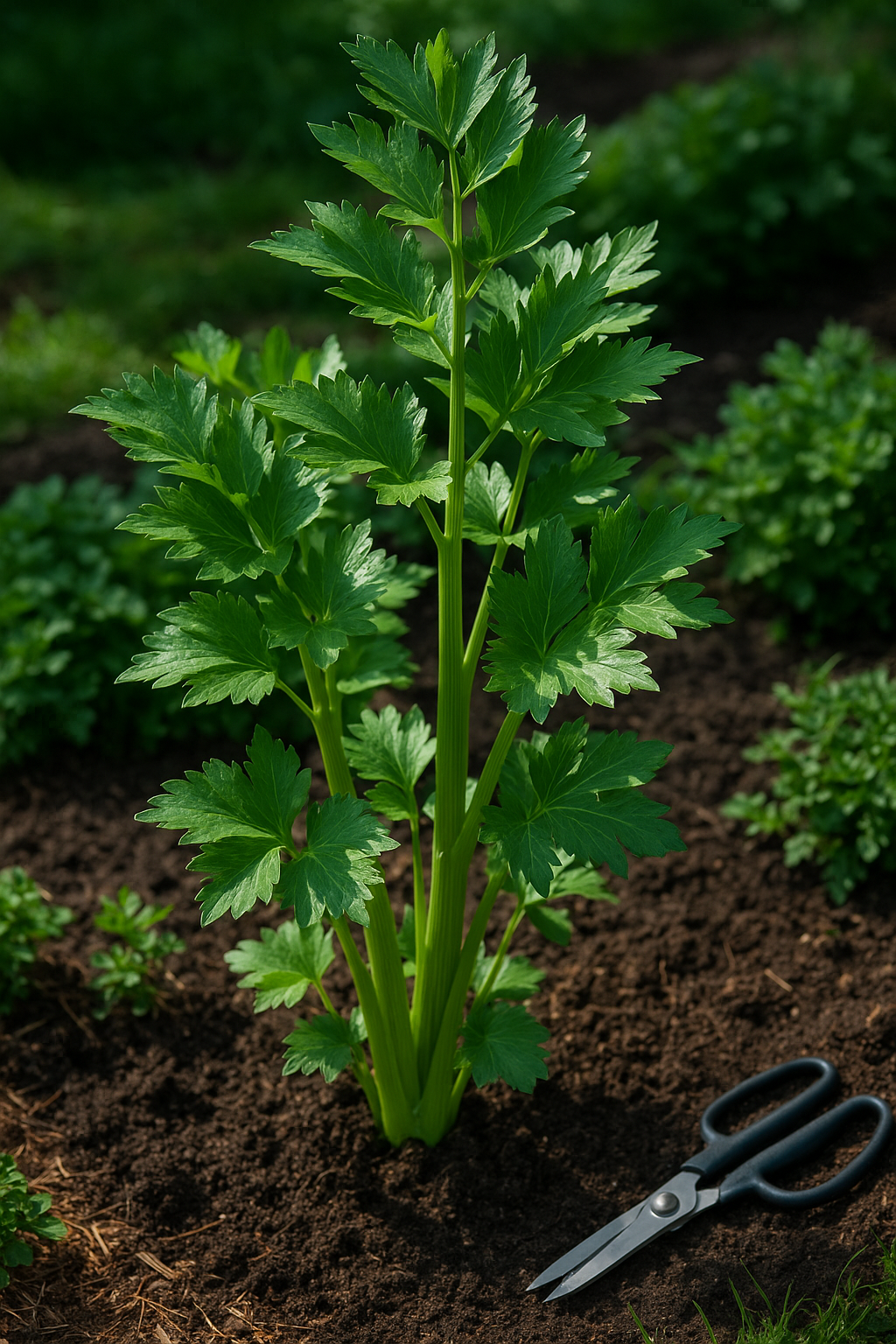Introduction
If you’ve ever wondered how to harvest lovage, you’re in the right place. Lovage is a flavorful, versatile herb that can elevate soups, salads, and stews with its intense celery-like flavor. Knowing the right way to pick lovage leaves and stalks isn’t just about getting the best taste—it’s also essential for keeping your plants healthy and productive all season long.
Many gardeners make the mistake of cutting back too much, too soon, or snipping in the wrong spot, which can stunt future growth. In this guide, you’ll learn when your lovage is ready to harvest, how to snip stalks and leaves without damaging the plant, and some smart tips for using and storing your fresh bounty.
Whether you grow lovage in a garden bed or a backyard pot, you’ll find practical advice to get the most flavor and longevity from every harvest.
When Is the Best Time to Harvest Lovage?

Lovage is a hardy perennial herb that grows vigorously through spring and early summer, with its peak flavor and tenderness at specific stages. Early in the season, once the plant reaches about 12 to 18 inches tall and has several strong stems, you can begin harvesting the leaves—typically in mid to late spring, depending on your climate.
The ideal time to pick lovage leaves is when they’re young, bright green, and tender, before the plant starts to flower; older leaves can become tough and lose flavor. To harvest, simply snip individual leaves or cut stems back to encourage bushier growth, always leaving at least a third of the plant to ensure it continues thriving.
For lovage stalks, wait until the plant is well-established, generally early to mid-summer, and about two to three feet tall. You’ll notice the stalks become hollow, crisp, and thick—perfect for using as flavorful straws for cocktails or aromatic additions to stocks and soups. Stalks should be harvested before they begin to yellow or turn woody, which signals overripeness. Always check that the stems are firm and snap cleanly when bent.
By paying attention to these visual cues and timing your harvesting according to the plant’s growth stages, you’ll enjoy lovage at its very best throughout the growing season.
Tools and Preparation for Harvesting Lovage

Gathering the right tools is the first step to successful lovage harvesting. Sharp garden scissors or hand pruners work best—just make sure they’re clean and sanitized to prevent spreading plant diseases.
Before you start, check your equipment for sticky residue or rust, and wipe the blades with rubbing alcohol for extra safety.
Aim to harvest lovage in the morning after the dew has dried but before the midday heat sets in; this is when the stems and leaves are most flavorful and less prone to wilting. It’s also best to pick on a dry day, as wet foliage can attract fungal diseases.
To avoid harming your lovage, only take up to a third of the plant at any time, cutting stems about two inches above the soil to encourage regrowth. Avoid yanking or tearing the stalks, which can damage the roots.
Finally, inspect the plant for pests or disease before cutting so you don’t spread issues further through your tools. Proper prep and careful cutting will help your lovage thrive while giving you a fresh, tasty harvest.
How to Harvest Lovage Leaves
Harvesting lovage leaves is simple, but technique matters if you want your plant to thrive all season. To gather individual leaves, use clean scissors or pinch off outer leaves near the stem base. Always pick the largest, most mature leaves first, leaving the new, central growth intact—this helps the plant continue producing fresh foliage.
If you’re looking to harvest a larger amount or want to cut stems, use sharp garden shears to snip full stalks about two inches above soil level, again focusing on the outermost stems while leaving the center untouched. Never take more than a third of the plant at once; this is key for healthy regrowth.
Signs you may be over-harvesting include sparse, spindly stems, slowed growth, or yellowing leaves—if you notice these, pause harvesting and allow the plant to recover for a couple of weeks.
For continuous harvesting success:
- Water your lovage regularly.
- Mulch around the base to retain moisture.
- Feed with a mild organic fertilizer every month.
- Rotate your harvesting spots each time rather than focusing on one area.
- Avoid harvesting right after heavy rain when the plant is more fragile.
With these tips and a gentle touch, you’ll have a strong, leafy lovage plant ready for many harvests throughout the growing season.
How to Harvest Lovage Stalks
Lovage stalks are best harvested in late spring through early summer, once the plant is well established and the stalks have reached about 12–18 inches tall. For the most tender, flavorful stalks to use in soups, stews, or salads, choose the thicker outer stalks first, leaving the younger inner growth to mature.
Use clean, sharp garden shears or scissors to snip the stalks near their base, making an angled cut to prevent water from pooling and reduce the risk of disease. Avoid tearing or yanking the stalks, as this can stress or damage the plant’s crown and hinder regrowth.
If you plan to use lovage throughout the season, aim to cut no more than one-third of the plant at a time. This allows the remaining foliage to continue photosynthesizing, ensuring a steady supply. You can harvest every couple of weeks, especially if you water and feed your plant regularly, but always watch for signs of stress like wilting or slow regrowth.
Leaving some stalks and flowers on the plant also supports pollinators and allows your lovage to reseed naturally, providing more plants in your garden next year. By following these steps, you’ll keep your lovage healthy and productive, giving you plenty of aromatic stalks to enjoy in the kitchen.
Preserving and Storing Lovage After Harvest
Once you’ve harvested lovage, start by rinsing the leaves and stalks under cool, running water to remove any dirt or bugs. Gently pat them dry with a clean towel or let them air-dry on a kitchen cloth.
For a speedy drying method, spread washed lovage on a baking sheet and let it sit in a warm, airy spot, or use a salad spinner to remove extra moisture.
For short-term storage, wrap the cleaned stalks or leaves in a damp paper towel, place them in a resealable bag, and keep them in the crisper drawer of your fridge. This helps preserve their crispness for up to a week.
For long-term storage, freeze lovage by chopping the leaves and packing them into ice cube trays with a little water or olive oil—perfect for tossing straight into soups and stews.
Alternatively, dry the leaves by hanging small bunches upside down in a dark, well-ventilated area, or use a dehydrator for quick results. Store dried lovage in airtight jars away from light and heat to lock in its fresh, celery-like flavor.
Always label your stored herbs with dates, and avoid crushing the leaves until you’re ready to use them, as whole leaves keep their flavor much longer.
Common Mistakes to Avoid When Harvesting Lovage
One common mistake gardeners make when harvesting lovage is taking too much at once, which can stress the plant and reduce future yields. Over-harvesting leaves or stems weakens lovage, making it more prone to yellowing, stunted growth, or even dying back entirely.
Another frequent error is using dull or blunt scissors to cut foliage. This can crush stems rather than give a clean cut, making the plant more susceptible to disease. Timing is also critical; harvesting during the hottest part of the day or when the plant is stressed from drought can result in wilted, less flavorful leaves and delayed recovery.
Symptoms of plant stress from improper harvesting include limp or drooping foliage, slowed regrowth, and a general reduction in vigor.
To avoid these pitfalls, follow these tips:
- Only take about a third of the plant’s growth at any time.
- Always use sharp scissors or garden shears to make clean cuts.
- Harvest in the cool morning when the essential oils are at their peak.
- Water the plant well after harvesting.
- Leave enough foliage to support ongoing photosynthesis.
These small steps will help ensure your lovage patch stays healthy, productive, and ready for your kitchen year after year.
Conclusion
Harvesting lovage successfully comes down to a few simple steps: pick leaves in the morning when their flavor is strongest, use sharp scissors or pruners to avoid damaging the plant, and regularly trim stems to encourage new growth. Whether you add lovage to soups, salads, or homemade stocks, the fresh, celery-like taste of your homegrown herb can really elevate your cooking.
Don’t hesitate to experiment with new recipes and discover just how versatile lovage can be in your kitchen. If you have questions about growing or using lovage, feel free to leave a comment below—I’m happy to help!
